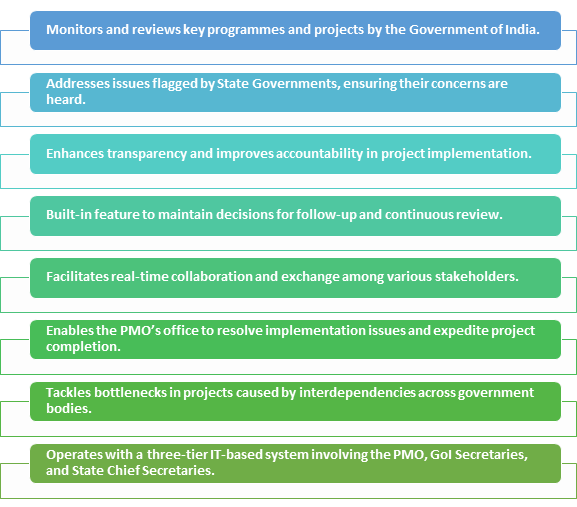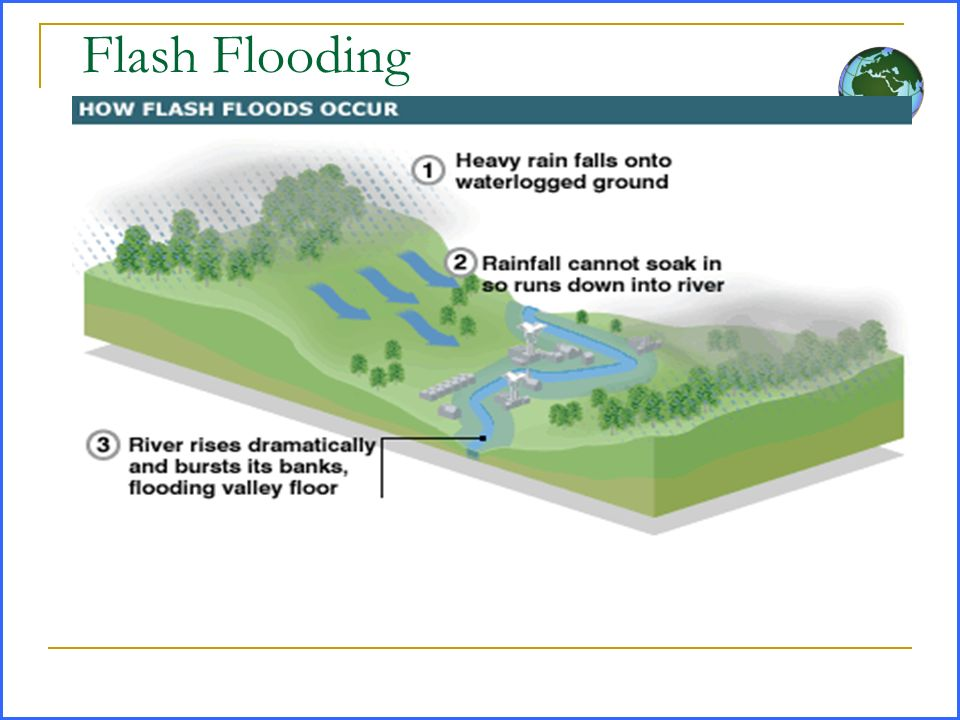PM chairs 48th PRAGATI Meeting
Syllabus: GS2/Governance
In News
- Prime Minister Narendra Modi chaired the 48th PRAGATI meeting focused on accelerating critical infrastructure projects in Mines, Railways, and Water Resources.
Pro-Active Governance and Timely Implementation(PRAGATI)
- It is an interactive platform designed to address citizens’ grievances while monitoring and reviewing key government programmes and projects at both Central and State levels.

- Launched in 2015.
Salient Features of PRAGATI and Progress
- Since 2015, PRAGATI has played a key role in advancing India’s infrastructure and social development by enabling strategic project selection, strong leadership, and digital governance.
- It has helped overcome challenges, enhanced collaboration among states, and supported major social initiatives, significantly accelerating the nation’s development progress.
Source: PIB
India & Vietnam Hold 13th Political Consultation
Syllabus: GS2/IR
In News
- India and Vietnam held the 13th Political Consultation and 10th Strategic Dialogue in New Delhi.
Outcomes of meeting
- They reviewed progress under the Comprehensive Strategic Partnership, guided by the Joint Vision (2020) and 2024–2028 Plan of Action.
- Discussions covered a wide range of areas including defence, maritime security, trade, energy, technology, culture, and education.
- Both sides condemned terrorism and highlighted cooperation through development initiatives and scholarships.
- India appreciated Vietnam’s support against terrorism, while Vietnam thanked India for organizing the exposition of Lord Buddha’s Holy Relics, attended by over 14 million people.
Historical Linkages
- India and Vietnam share a historically close and warm relationship.
- The foundations of their ties date back to their independence movements, with Mahatma Gandhi and President Ho Chi Minh exchanging messages.
- India played a role in the International Commission for Supervision and Control after the 1954 Geneva Accord and established full diplomatic relations with Vietnam in 1972.
- The partnership has evolved steadily, guided by the “Joint Vision for Peace, Prosperity and People” adopted during a virtual summit in December 2020.
Trade, Economic and Development Cooperation
- India and Vietnam maintain active trade and economic relations, with bilateral trade around USD 14.8–14.9 billion in 2023–2024.
- India exports engineering goods, agricultural products, pharmaceuticals, and chemicals to Vietnam, while importing electronics, machinery, chemicals, coffee, tea, and textiles.
- Trade is supported by the ASEAN-India Trade Agreement and regular business delegations, fairs, and exhibitions.
Defence
- India and Vietnam have strong defence and security cooperation, guided by key agreements such as the 2009 MoU on Defence Cooperation and the 2015 Joint Vision on Defence Cooperation.
- In June 2022, they adopted a new “Joint Vision Statement on Defence Partnership towards 2030” and signed a MoU on Mutual Logistics Support.
- India recently gifted a missile corvette (INS Kirpan) to Vietnam and is nearing a $700 million deal for BrahMos supersonic missiles
- Both nations conduct regular bilateral naval exercises (e.g., PASSEX), the joint military exercise VINBAX, port calls, and collaboration on maritime domain awareness.
Source: AIR
Trigeminal Neuralgia
Syllabus: GS2/ Health
Context
- Trigeminal Neuralgia (TN), a rare and intensely painful neurological condition, is increasingly gaining public awareness due to rising cases and delayed diagnosis.
What is Trigeminal neuralgia?
- Trigeminal neuralgia is a chronic pain disorder involving the trigeminal nerve, which branches across the eye, cheek, and jaw.
- While humans have two trigeminal nerves, pain usually affects only one side of the face.
- The condition is also called tic douloureux, meaning “painful tic.”
- The pain from TN can be so severe and unpredictable that it leads to suicidal thoughts in some patients. Hence it is also called ‘suicide disease’.
Causes of Trigeminal Neuralgia
- The pain in TN typically arises due to disruption or irritation of the trigeminal nerve, especially where it enters the brainstem.
- This is most often caused by, Compression by a blood vessel, Multiple sclerosis (MS), Tumours, Nerve damage from surgery or trauma etc.
Treatment
- Medications: Anticonvulsants like carbamazepine
- Surgery: Microvascular decompression
- Minimally invasive: Gamma knife radiosurgery, radiofrequency ablation.
Source: BS
Agroforestry for Resilient Rainfed Landscapes
Syllabus: GS3/Economy
In News
- Recently, a workshop on “Agroforestry for Resilient Rainfed Landscapes” was held in New Delhi.
Agroforestry
- It is a land management system that integrates trees with crops and/or animals, promoting ecological and socio-economic benefits.
- It is a nature-based solution that boosts productivity, income, food security, and climate resilience, especially for smallholder farmers.
- Trees like fruit, fodder, or nitrogen-fixing varieties provide added value and sustainability.
Status and Benefits
- Currently, agroforestry covers 8.65% of India’s total geographical area, totalling about 28.42 million hectares.
- Agroforestry can help reduce wood imports, sequester carbon, and convert fallow lands into productive areas.
- It addresses food, energy, employment, and environmental needs, aligning with global goals like the Paris Agreement, Bonn Challenge, UN SDGs, UNCCD, and national missions like Doubling Farmers’ Income and the Green India Mission.
Related Steps in India
- The GROW (Greening and Restoration of Wasteland with Agroforestry) report and portal, launched by NITI Aayog.
- It uses GIS and remote sensing to assess agroforestry suitability across India.
- It developed an Agroforestry Suitability Index (ASI) to guide greening and restoration efforts, especially of wastelands
- India introduced the world’s first National Agroforestry Policy in 2014 and it promotes agroforestry to boost productivity, profitability, and sustainability.
Source: PIB
The First Quantum Computing Valley of India
Syllabus: GS3/Science and Technology
Context
- The first Quantum Computing Valley of India will be launched in Amaravati, Andhra Pradesh by January 2026.
About
- The park is designed to employ lakhs of professionals, supporting research, innovation, and industrial growth.
- It will be accessible to states, government bodies, and institutions across India.
- The goal is to ensure quantum technology benefits all of human society.
- The project aligns with the National Quantum Mission (NQM).
- Focus: Productivity enhancement and wealth creation via quantum technologies.
National Quantum Mission (NQM)
- The government approved the NQM in 2023 from 2023-24 to 2030-31.
- Aim: To seed, nurture and scale up scientific and industrial R&D and create a vibrant & innovative ecosystem in Quantum Technology (QT).
- This will accelerate QT led economic growth, nurture the ecosystem in the country and make India one of the leading nations in the development of Quantum Technologies & Applications (QTA).
- The Mission objectives include developing intermediate-scale quantum computers with 50-1000 physical qubits in 8 years in various platforms like superconducting and photonic technology.
- Significance: NQM has the potential to elevate the country’s Technology Development ecosystem to a level of global competitiveness.
- The Mission would greatly benefit various sectors including communication, health, financial, energy with applications in drug design, space, banking, security etc.
- The Mission will also provide a huge boost to National priorities like Digital India, Make in India, Skill India and Stand-up India, Start-up India, Self-reliant India and Sustainable Development Goals (SDG).
Source: PIB
Centre Approves South Asia Unit of International Potato Centre
Syllabus: GS3/Agriculture
Context
- The Centre cleared a proposal to set up the South Asia regional centre of the Peru-based International Potato Center (CIP) in India.
About
- The CIP-South Asia Regional Centre (CSARC) will come up in Agra, Uttar Pradesh.
- It will not only serve farmers in potato-belt states like UP, Bihar and West Bengal but also cater to South Asian countries.
- Objective: To increase food and nutrition security, farmers income, and job creation by improving potato and sweetpotato productivity, post-harvest management and value-addition.
- China set up its regional CIP centre eight years ago known as the China Center for Asia Pacific (CCCAP) serving the entire East Asia and the Pacific region.
Potato Cultivation
- India is the world’s second top producer and consumer of potato; in 2020, it saw a production of 51.30 million tonnes.
- At the top is China, with its potato output in 2020 at 78.24 million tonnes.
- Together, the two countries account for over one-third of the global potato production (359.07 MT).
- Among the states in India,Uttar Pradesh and West Bengal lead the production, followed by Bihar.
- Gujarat, Madhya Pradesh and Punjab are the other significant potato producers.
Source: IE
Flash Floods
Syllabus: GS-3/ Disaster Management
Context
- Flash floods in the Punnappuzha river, witnessed a massive landslide, triggered panic in Wayanad district of Kerala.
What are Flash floods?
- Flash Floods are highly localized events of short duration with a very high peak and usually have less than six hours between the occurrence of the rainfall and peak flood.

Causes of Flash Floods
- Intense Rainfall: Heavy and concentrated rainfall over a short duration is the primary trigger.
- Glacial Lake Outburst Floods (GLOFs): Sudden release of water from glacial lakes due to melting or avalanches.
- Cloudbursts: Localised, extremely heavy downpours (e.g., in hilly regions like the Himalayas).
- Tropical Cyclones & Storms: Sudden heavy rains from cyclonic systems (e.g., during monsoon or pre-monsoon).
- Hilly Terrain: Steep slopes cause fast runoff, leading to sudden water accumulation in valleys.
- Encroachment of Riverbanks: Reduces river capacity, causing spillover during sudden inflows.
- Climate Change: Increases the frequency and intensity of extreme weather events, including cloudbursts and erratic rainfall.
Source: TH
Prime Ministers Museum and Library (PMML)
Syllabus: Miscellaneous
Context
- PM Modi chaired the 47th Annual General Meeting of the Prime Ministers Museum and Library (PMML) Society at Teen Murti Bhawan in New Delhi.
About
- Origin: It is housed at Teen Murti Bhawan, the former official residence of India’s first Prime Minister, Jawaharlal Nehru.
- Originally known as the Nehru Memorial Museum and Library (NMML), it was established in 1964 after the death of Jawaharlal Nehru.
- On June 27th 1964, the Teen Murti Bhavan was converted into the Nehru Memorial Museum and Library (NMML).
- Renamed in 2021 as the Prime Ministers Museum and Library to honour the contributions of all Indian Prime Ministers.
- Design: The Teen Murti Bhawan, which houses the PMML, was designed by British architect Robert Tor Russell in 1929–30.
- Objectives: To preserve, document, and disseminate the legacy and contributions of all Prime Ministers of India.
- To act as a premier institution for research in modern Indian history.
Source: IE
Previous article
Bihar to Get its First Nuclear Power Plant
Next article
Official Language